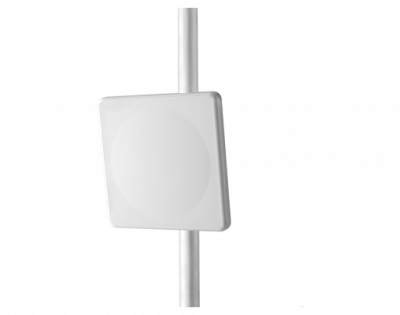Products
Licensed Ethernet Microwave for Multi-Service Network
PTP 820 is a point-to-point licensed microwave backhaul platform that integrates leading networking functionality with the industry’s most advanced microwave technologies, creating a superior microwave transport solution.
KEY FEATURES
Composed of high-density multi-technology nodes and integrated radio units, the PTP 820 series offers flexibility in choosing all-indoor, split-mount, and all-outdoor configuration options. Exploiting unique Line of Sight (LOS) Multiple Input Multiple Output (MIMO) technology, modulation up to 2048 QAM and wider channel bandwidths ensures industry-leading throughput and spectral efficiency.
The PTP 820C has dual-core functionality enabling the system to operate up to 2 Gbps via software upgrades, eliminating the need for future forklift upgrades, or major system overhaul by the network operator to deliver gigabit-plus capacity.
PTP 820 also offers both Synchronous Ethernet (SyncE) and IEEEv2 synchronisation protocols required for large ISP and MPLS networks.
Operations, Administration and Maintenance (OA&M) tools coupled with a full suite of network and element management systems (NMS and EMS) simplify network provisioning and monitoring, reducing operators’ total cost of ownership and enabling them to meet the most stringent service level agreements.
Combining technologies, equipment and services, PTP 820 enables network operators to meet accelerating demand for capacity cost-effectively under rapidly evolving conditions.
HIGHLIGHTS
• Up to 2048 QAM, with 11-step hitless and errorless Adaptive Coding & Modulation (ACM) for high reliability
• Up to 80 MHz bandwidth supported
• Multi-gigabit radio capacity with high spectral efficiency
• TDM and/or packet supporting legacy services and evolution to all-packet
• Integrated Ethernet Switch, MEF Carrier Ethernet 2.0 compliant, MPLS-TP-ready
• Header de-duplication for additional capacity boost
• Carrier-grade service resiliency (G.8032, MSTP)
• Intelligent service-centric management utilising Hierarchical QoS and advanced OA&M capabilities
• ITU-T Y.1731 Performance Management – MEF 35
• Integrated synchronisation solution: Native/SyncE/IEEE 1588v2
• Lowest power consumption with adaptive green mode
• Low latency with unique frame cut-through for latency sensitive services
• Industry-leading system gain
SPECIFICATIONS
• Role in the Network: Split Mount or all indoor, multi-carrier options
• Transport Technology: Hybrid and/or all packet
• TDM Interface: 16 x E1/T1
• Modulation: QPSK to 2048 QAM w/ACM
• Channel Size: 3.5 to 60 MHz
• Capacity (Layer 2): 527 Mbps; 1.05 Gbps
• Capacity with Multi Layer Compression: 833 Mbps (1+0); 1.67 Gbps (2+0)
• Configuration: 1+0, 1+1 HSB, 2+0 (E/W), 2+0 XPIC, 2+0 MC-ABC
• LOS MIMO: No
• XPIC: Yes
• Ethernet Interface: 4 x 10/100/1000Base-T and 2x1000base-X
• Management Interface: 1 x 10/100 Base-T
• External Alarm: 1 x DB9
• Dimensions (H x W x D): IDU: 44 x 426 x 180 mm
RFU-C: 200 x 200 x 85 mm
RFU-A: 44 x 443 x 421 mm
• Environmental: IDU: -5°C to +55°C (-25°C to +65°C extended)
RFU-C: -33°C to +55°C (-45°C to +60°C extended)
RFU-A: -5°C to +55°C (-25°C to +65°C extended)
• Power Input: -48 VDC
• PoE Injector Power Input: N/A
• Maximum Power: IDU Eth-only with single Consumption modem: 23.5W, addition for second modem, 2.9W, additional for 16 E1/ DS1: 11W
– RFU-C: 6-26 GHz; 1+0 22W; 1+1 39W; 28-38 GHz,
1+0 26W; 1+1 43W
RFU-Ae / RFU-Aep
– 1+0
High Level: 77W / 90W; Medium Level: 53W / 73W;
Low Level: 43W / 47W; Mute: 24W / 24W
– 1+1 HSB/SD BBS:
High Level: 101W / 114W; Medium Level: 77W / 97W;
Low Level: 67W / 71W; Mute: 48W / 48W
WHY CAMBIUM NETWORKS?
• Using establish world best practices in design and materials with full support of both Australian and International Standards
• Constant evolution of hardware and improvements in firmware for the benefit of the customer
• Established interoperability with various equipment and propriety security systems
• Full portfolio of solution development services and cloud management





